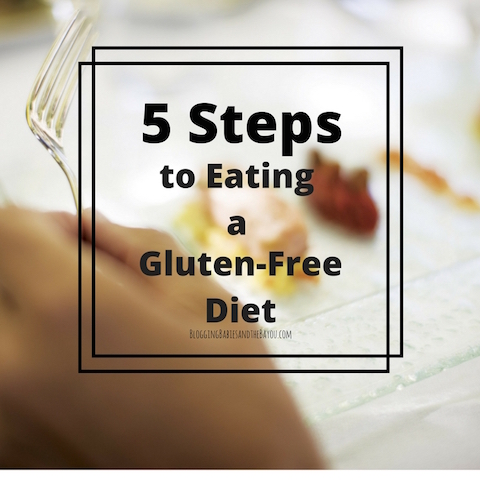Disclosure: The following is a article from our paid sponsor.

If you suffer from digestive upset and other stomach issues after eating certain types of foods, you may be intolerant to gluten. This substance is typically found in many types of bread and products that contain wheat, rye, malt, and sometimes barley. The inability to digest gluten is known as celiac disease, and it can cause damage to the intestines. While only your doctor can diagnose celiac disease, he or she may recommend a gluten-free diet to help relieve your symptoms. If you are new to this way of eating, here are five steps that can help get you started.
1. Make Your Kitchen a Gluten-Free Space
The first step in eating a gluten-free diet is to clear all potentially triggering foods from your kitchen. Go through your pantry and fridge and put aside unopened foods in a box for donation. Put all opened foods into one cabinet or shelf for the other members of your family to eat if you cannot bear the waste of throwing away unexpired food. However, having it around may be a considerable temptation that you will have to resist if it is still within reach, so you will have to exercise willpower if you decide to go this route.
2. Become a Label Detective
Once you go on a gluten-free diet, you will have to become more aware of what is in the food you eat, especially if you buy prepackaged or frozen food at the grocery store. As you shop, read each label and look for ingredients that may come from wheat, such as hydrolyzed plant or vegetable protein. Take advantage of smartphone apps that are designed to help you find gluten-free foods and may make shopping a less confusing experience.
As you shop for gluten-free foods, you may want to keep in mind that food manufacturers are not required to list whether a product is free of gluten. Many companies are now adding labels on a voluntary basis, but overall, you will have to read each one carefully. Remember to watch for cross-contamination warnings, as foods that were created in a facility that uses wheat, malt, or barley may have accidentally come into contact with these ingredients and could trigger a celiac attack.
3. Buy Fresh Baked Goods
It is difficult to find gluten-free baked goods if you cannot be sure where they originated from or whether they were exposed to wheat products during their processing. While this can be frustrating, it does not mean that you have to give up bread and other baked goods altogether. Instead of heading to the grocery store the next time you have a craving, find a local bakery that makes gluten-free pastries and bread. Not only will you be able to choose items that are baked fresh every day, you can be assured that they were created in a wheat-free environment.
4. Seek Out Gluten-Free Recipes
One of the best ways to avoid eating gluten is to make more fresh food at home. Consider making homemade pasta from spaghetti squash and using flour substitutes, such as quinoa, to make desserts. If you need gluten-free ingredients and want to try out new recipes, check out the Hampton Creek Instagram page for ideas and information about their products such as gluten-free mayonnaise, salad dressing, and cookie dough.
5. Make Your Family Aware of Your Diet
Nothing can derail a gluten-free diet and cause the painful symptoms of celiac disease faster than not making those around you aware of what you can and cannot eat. Once your doctor puts you on your new diet, sit down with your family and explain your new dietary restrictions to them and what they can do to help.
For example, if you cannot eat the bread you buy for the family yet you all use the same type of peanut butter, let them know that any bread crumbs left behind in the jar could trigger your symptoms if you happen to eat them the next time you use it. The more aware your family members are of what might affect you or make you sick, the better you will all be able to prevent it from happening.
Eating a gluten-free diet may go a long way in easing the symptoms of celiac disease, and only your doctor should help you make this decision. While this type of diet may be challenging, being vigilant about knowing where your food comes from and letting others know about this issue may help keep you happy and healthy.










Like this post? Please share!